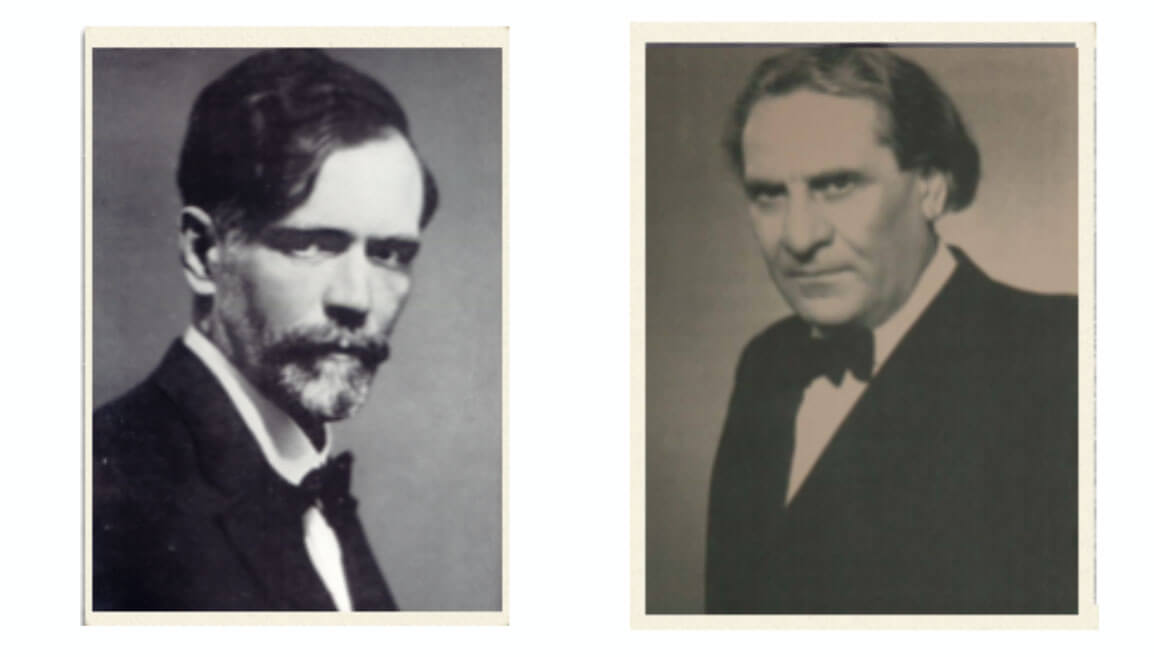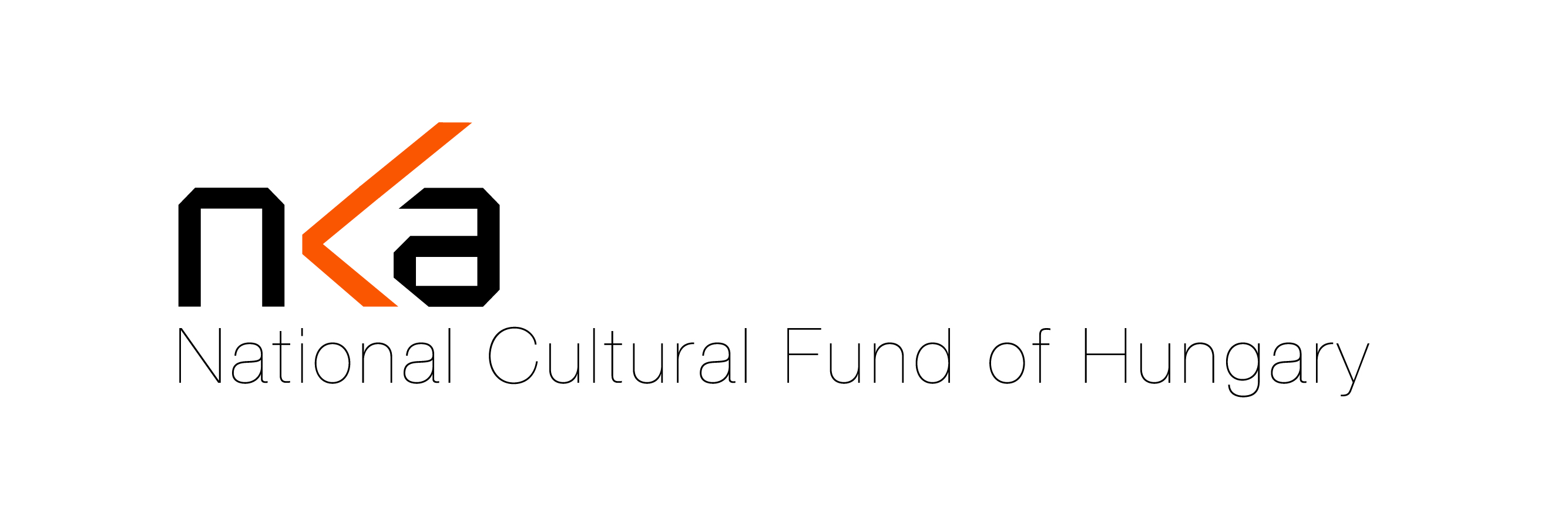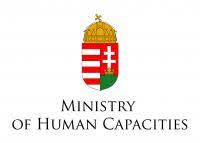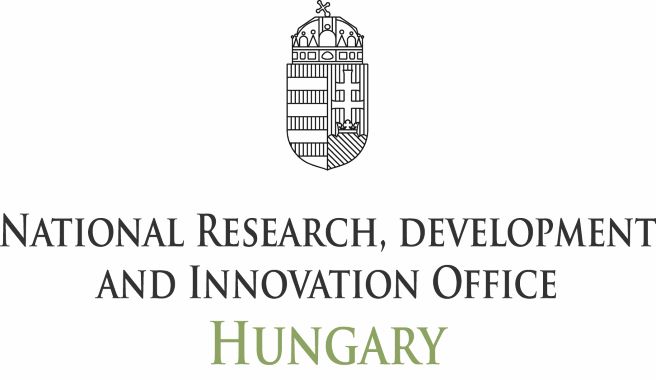Development of polyphonic skills and part-singing based on the
Kodály - Ádám
Énekes könyv (Singing Books) series
Book 8 (age 13-14)
Summary of musical concepts learnt through the folksong repertory Kodály-Ádám Singing Books, Book 8.
Rhythmic elements, metre:
- “tam-tiri”
- more syncopation, tie over barline
- 7/4, 6/4, 5/4 metre
- 7/8, 6/8, 5/8, 4/8 metre
- 7/16, 5/16 metre (Bulgarian folk melodies)
- alternation of 6/8 and 3/4 metres
- 3/2 metre
- songs with changing metre
Melodic elements and scales:
- major and minor melodies
- modes: aeolian, dorian, mixolydian, phrygian
- melodic turns with augmented second interval
- Chromatic notes “ma” & “lu” (Georgian folksong)
- alternation of “t” and “ta” in the same song
- alternation of “d” and “di” in the same song
- alternation of “r” and “ri” in the same song
Two-part rhythmic exercises
Rhythm exercises for practising 6/8 metre
Example 233-235
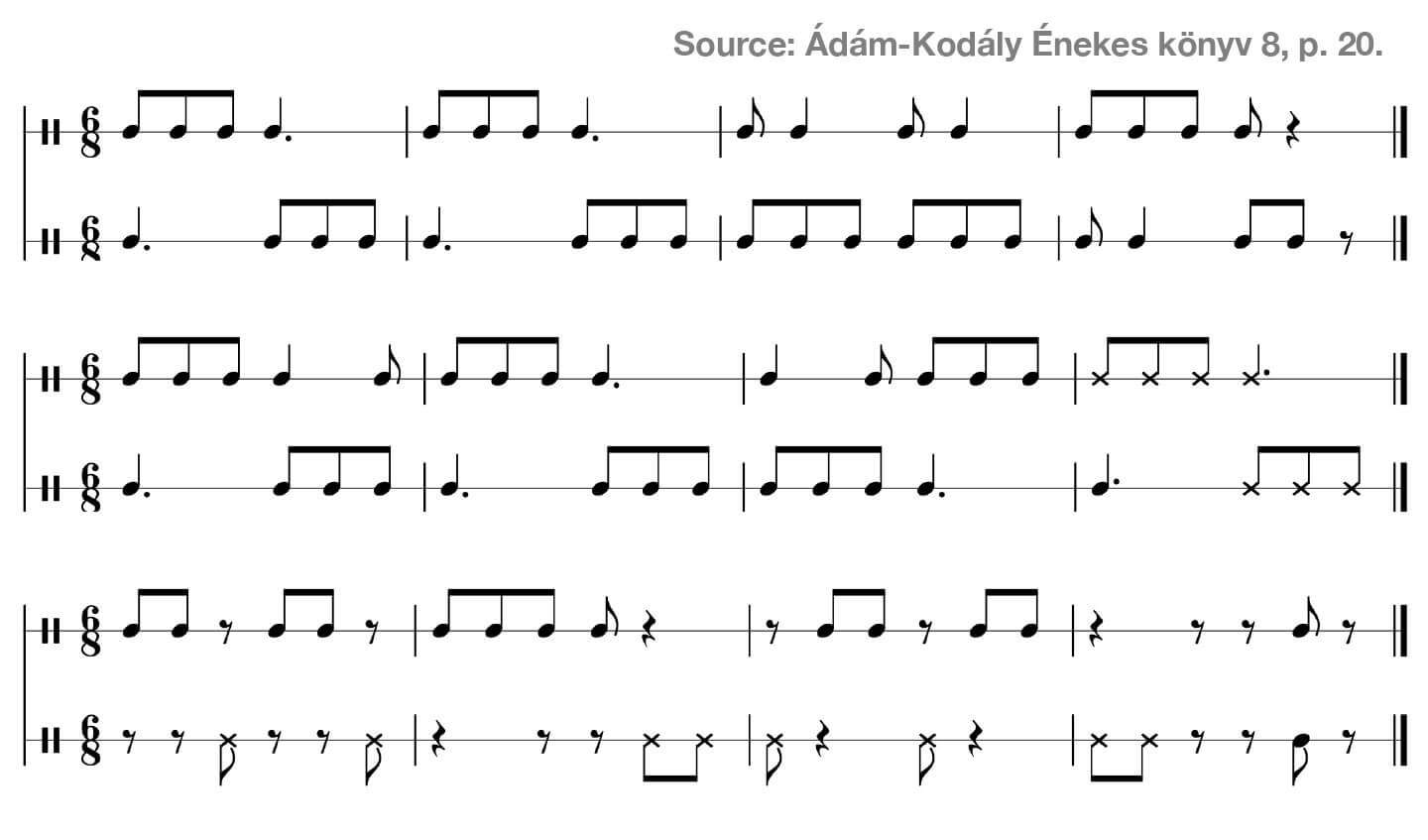
Rhythm exercises for practising 4/8 metre
Example 236-238
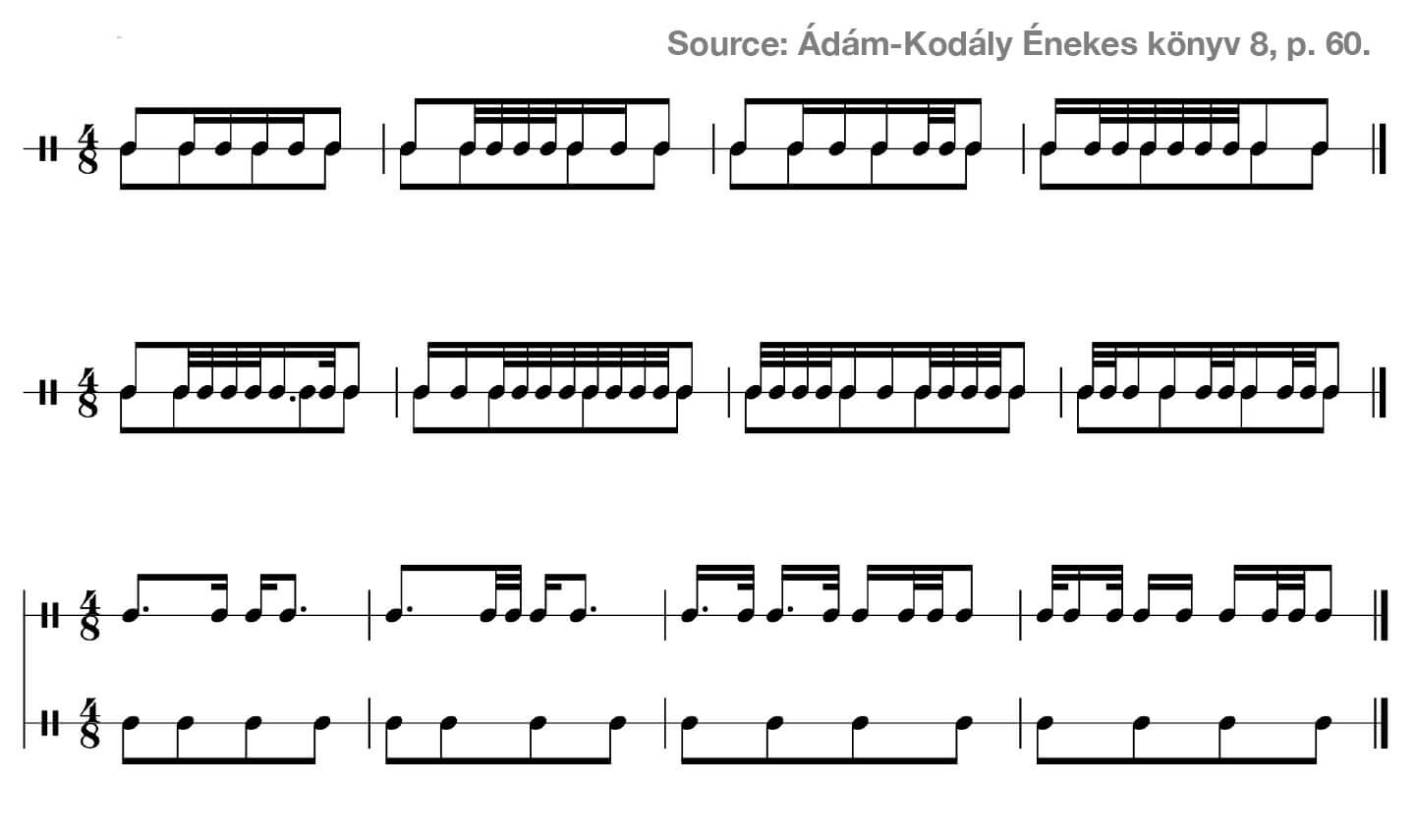
Three-part rhythmic exercises
Example 239

Example 240

Three-part exercises
Example 241

Example 242

use this and other similarly short three-part exercises to set up the tonality of the songs or choral pieces that are studied during the class or the choir rehearsal
Example 243

suspension
Canons
Example 244 (theme from Ludwig van Beethoven’s Symphony No. 8.)
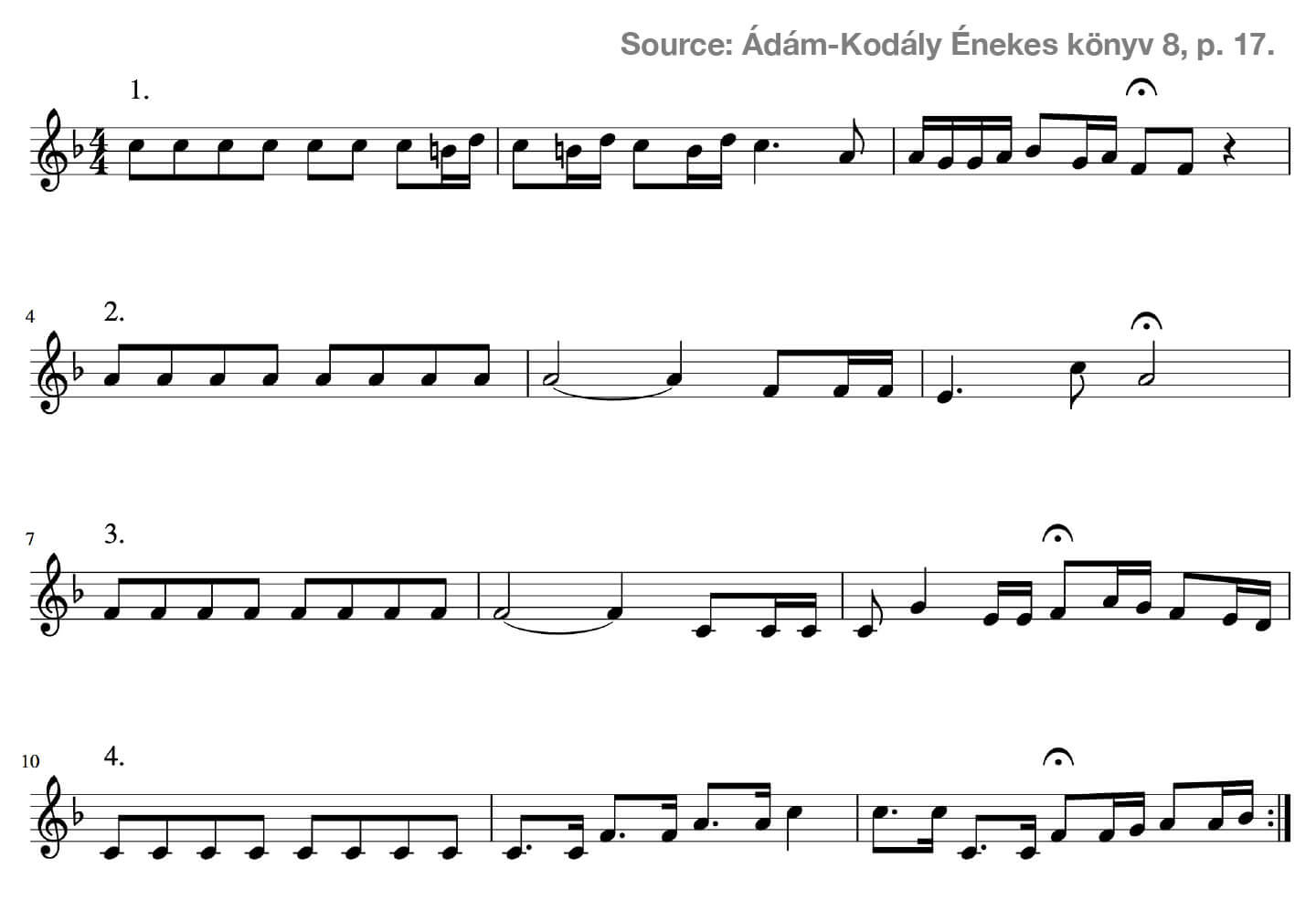
Example 245 (popular German song)
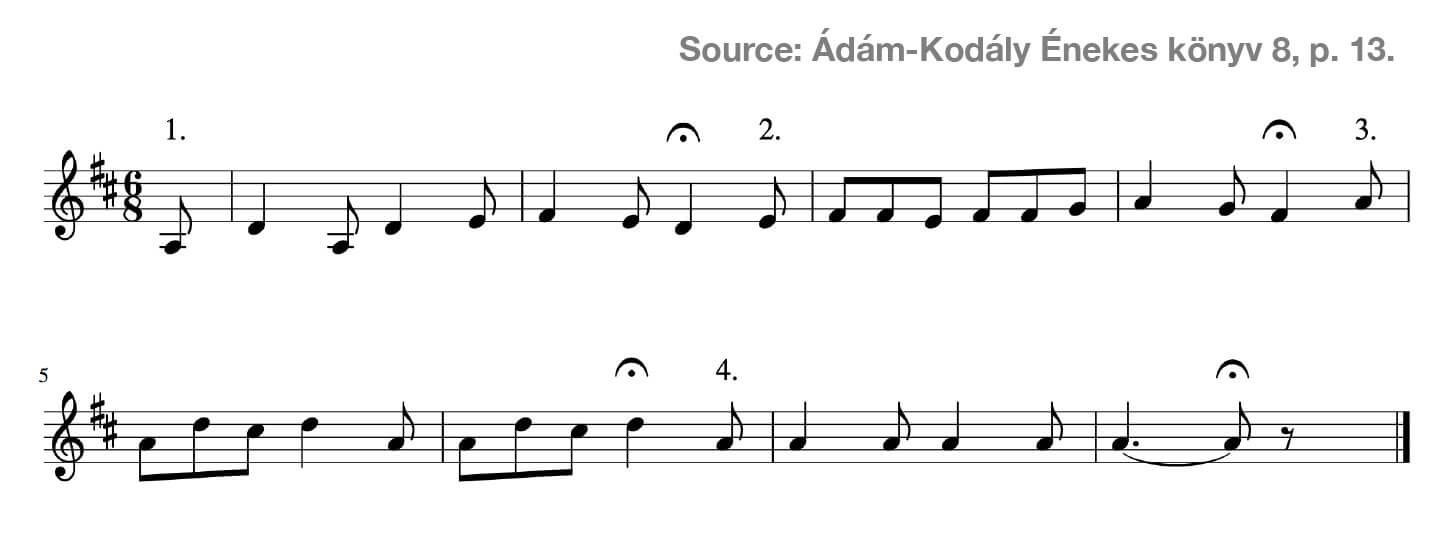
Example 246 (Wolfgang Amadeus Mozart: Difficile lectu mihi Mars)
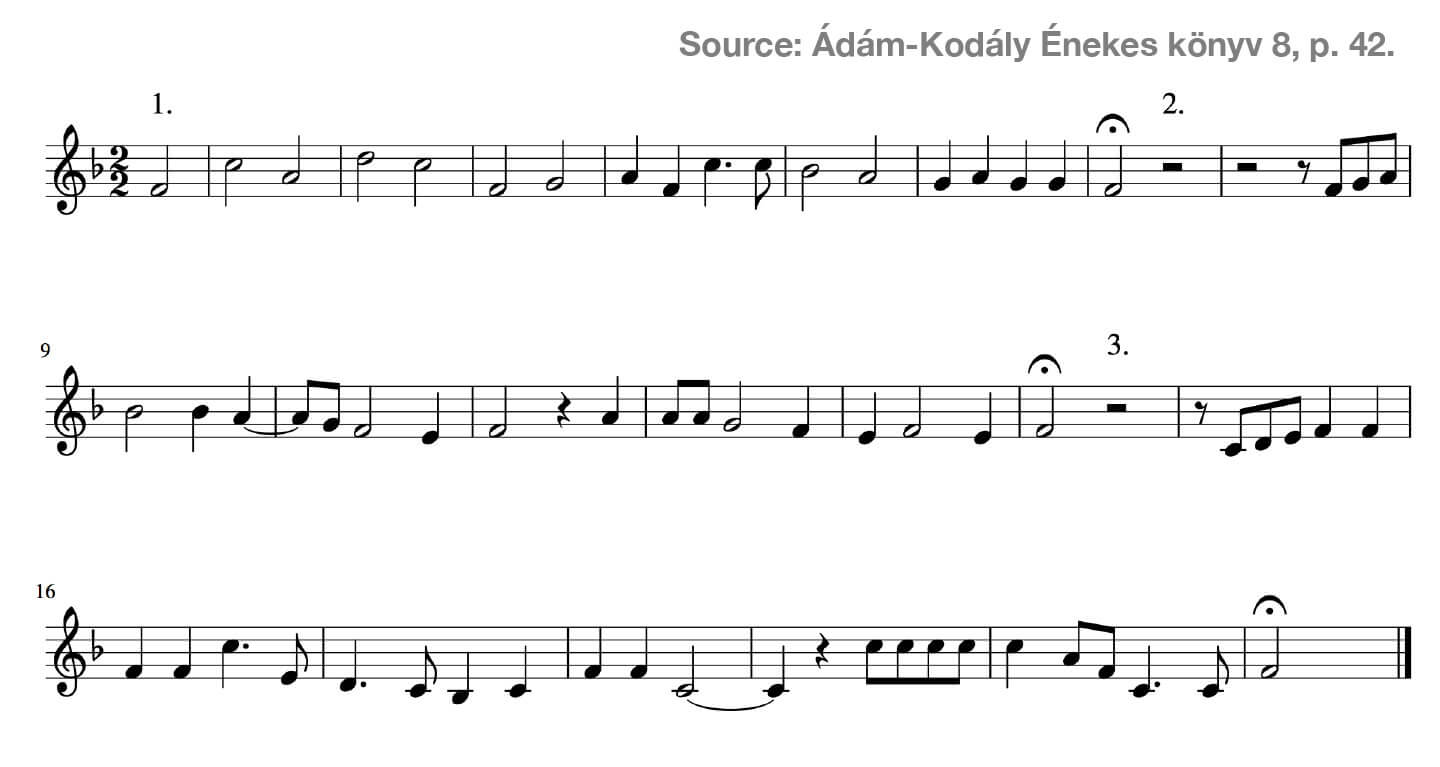
Example 247 (English canon)
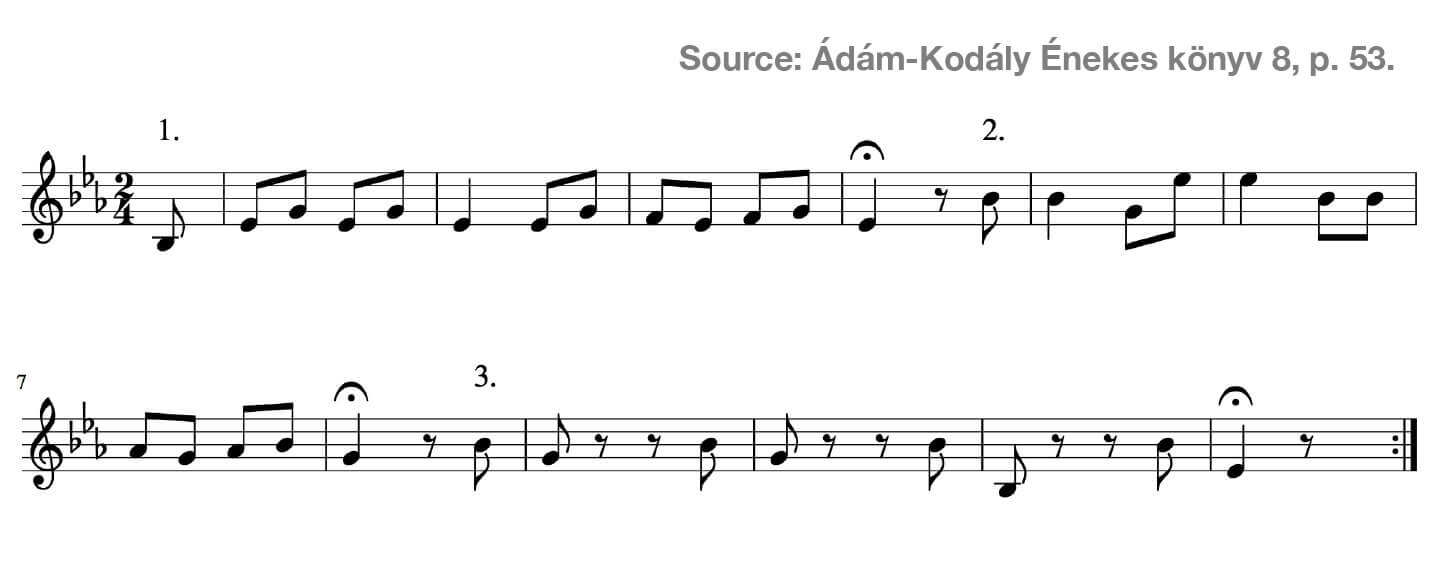
Canons
Example 248 (excerpt from a 16th century motet by Marc’Antonio Ingegneri)
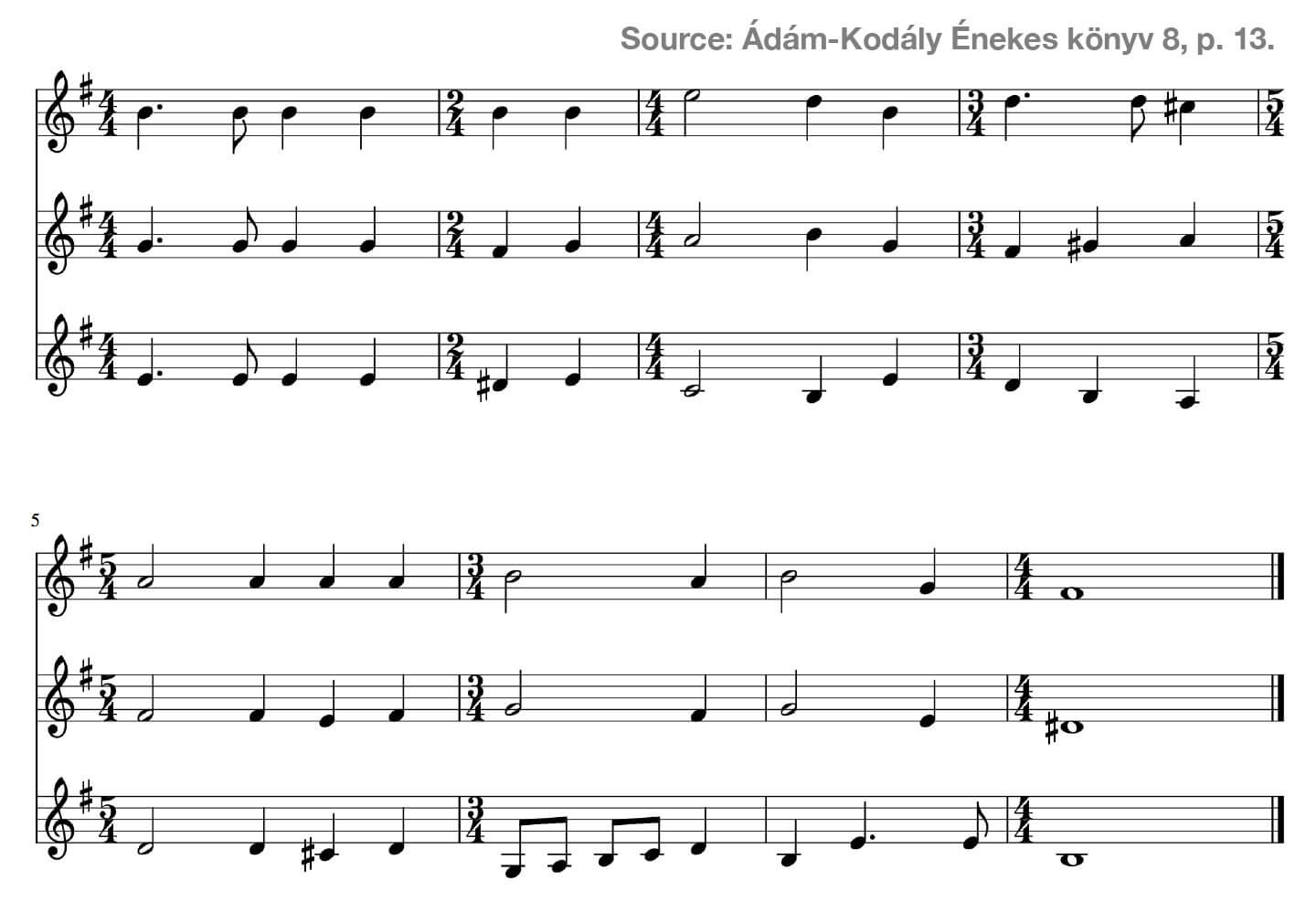
Example 249 (excerpt from choral song by Francesco Cavalli)
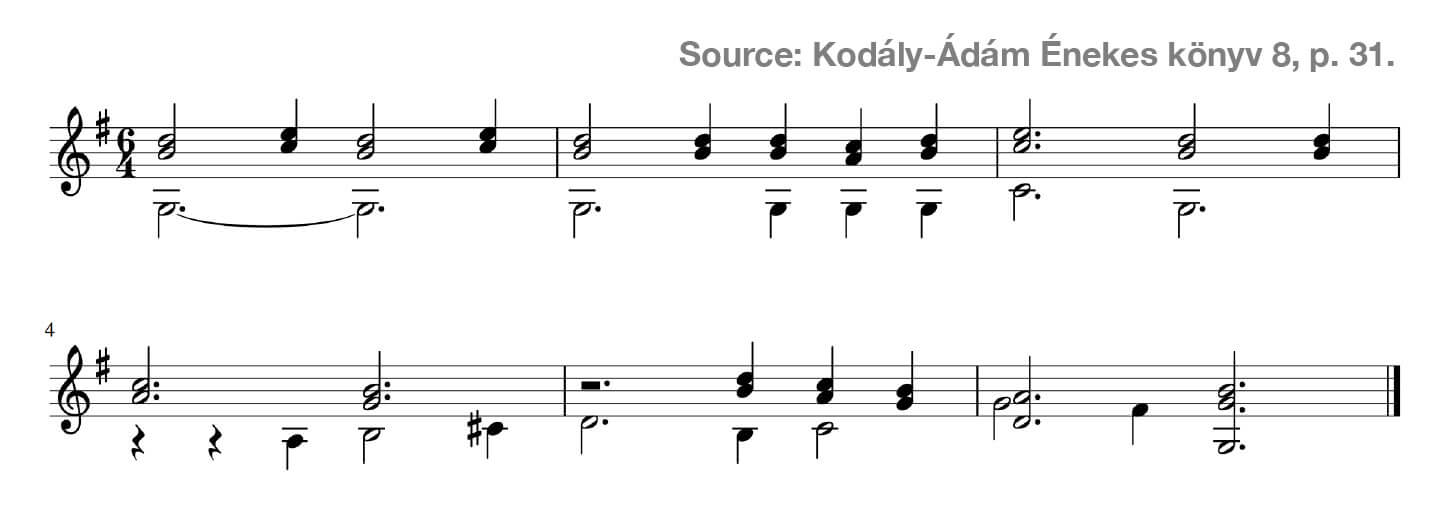
Example 250 (excerpt from a 17th century motet by Antonio Lotti)

Example 251 (excerpt from a motet by Heinrich Schütz)

Example 252 (Giovanni Pierluigi da Palestrina: Jesu, rex admirabilis)
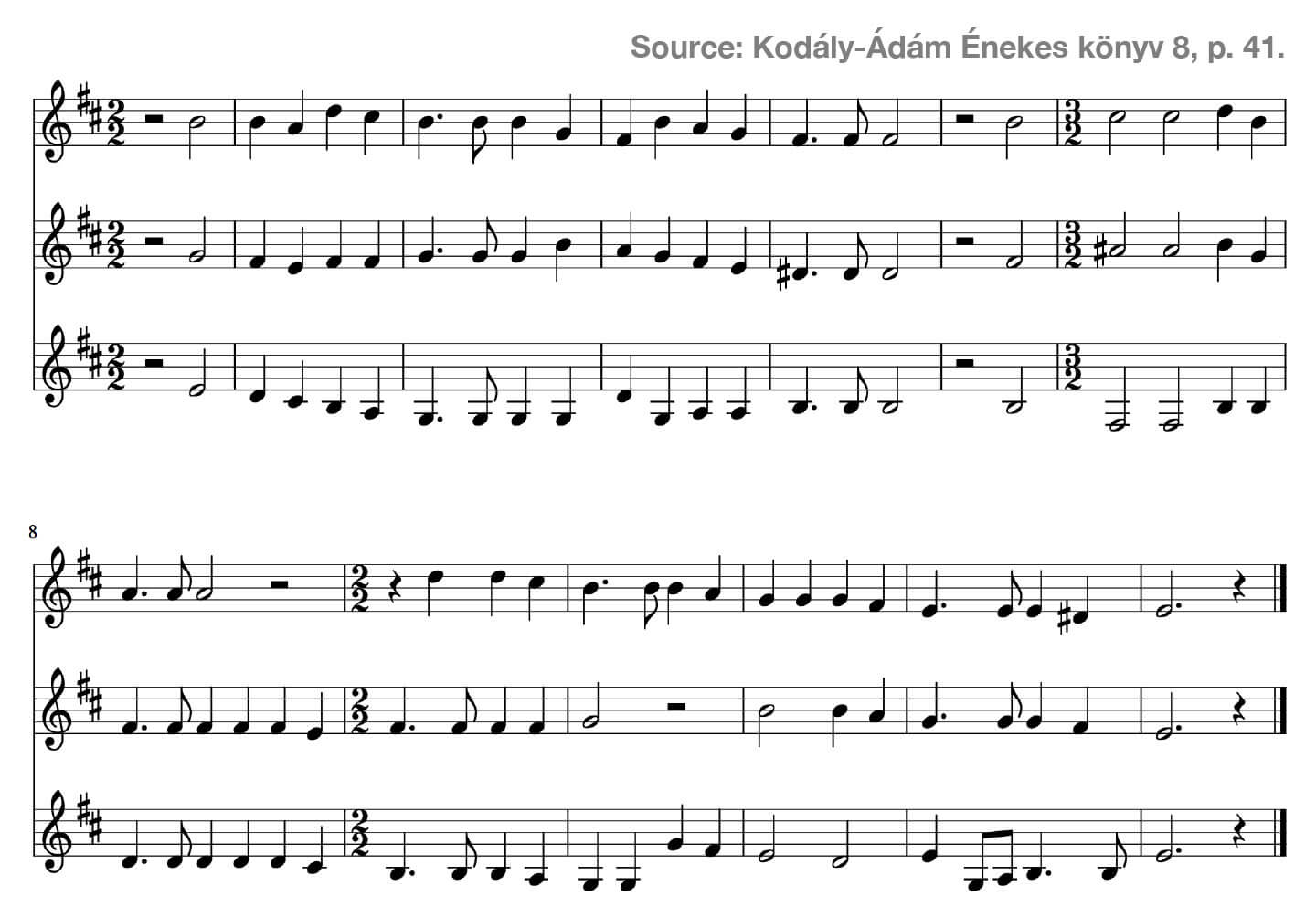
Example 253 (excerpt from Heinrich Schütz’s Historia der Geburt Christi)
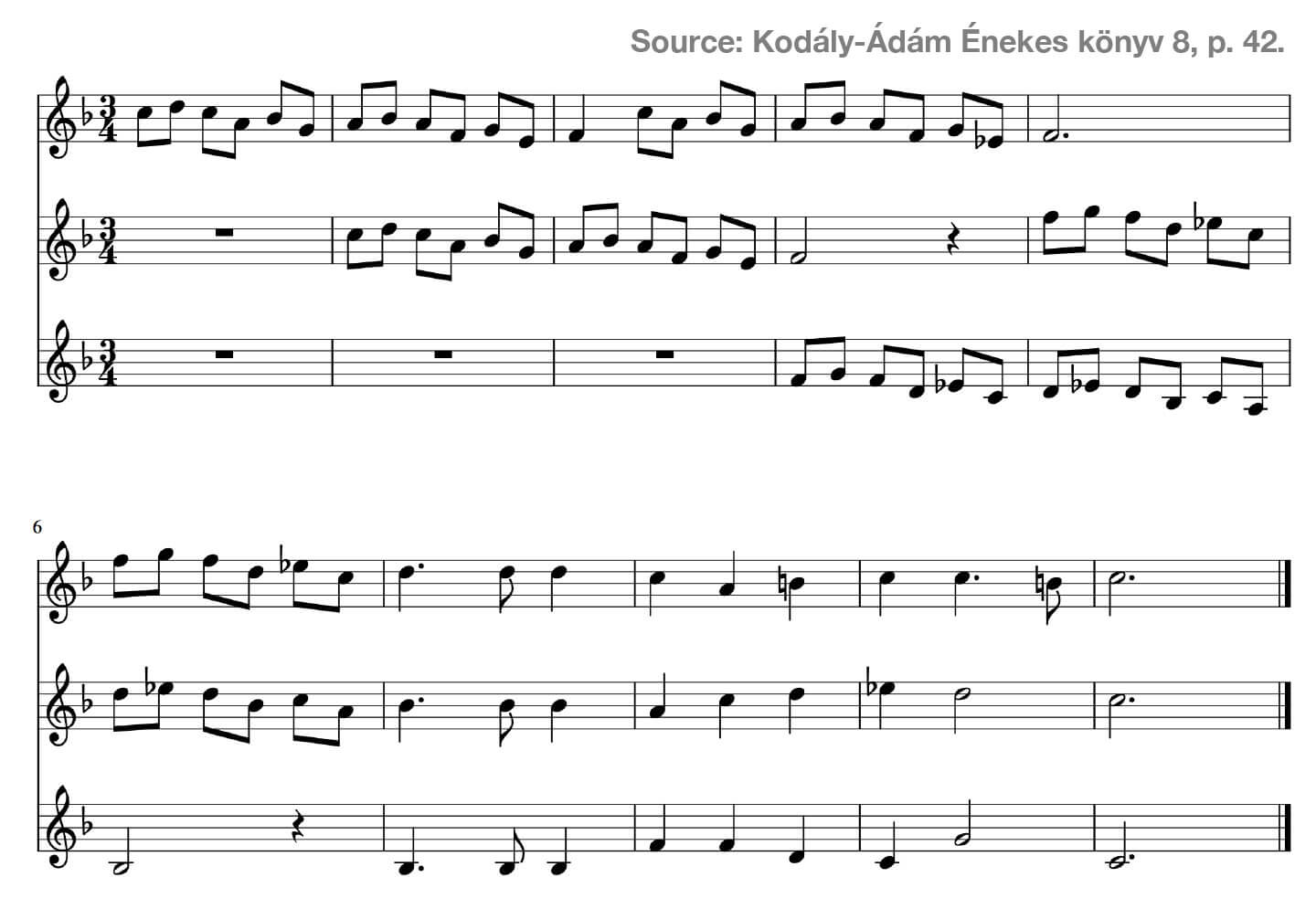
Example 254 (excerpt from a canzonetta by Luca Marenzio)
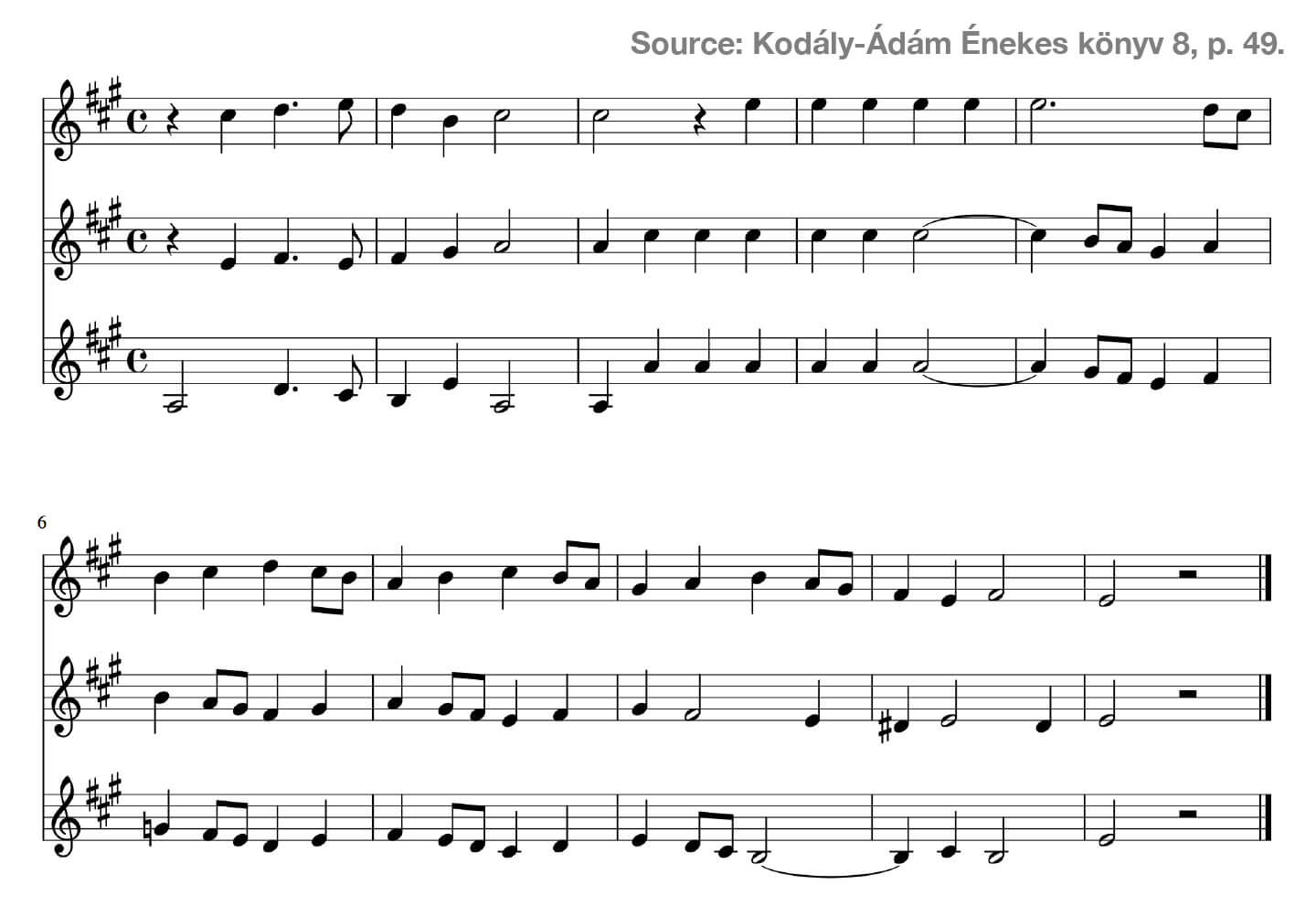
Example 255 (excerpt from Wolfgang Amadeus Mozart’s Die Zauberflöte)
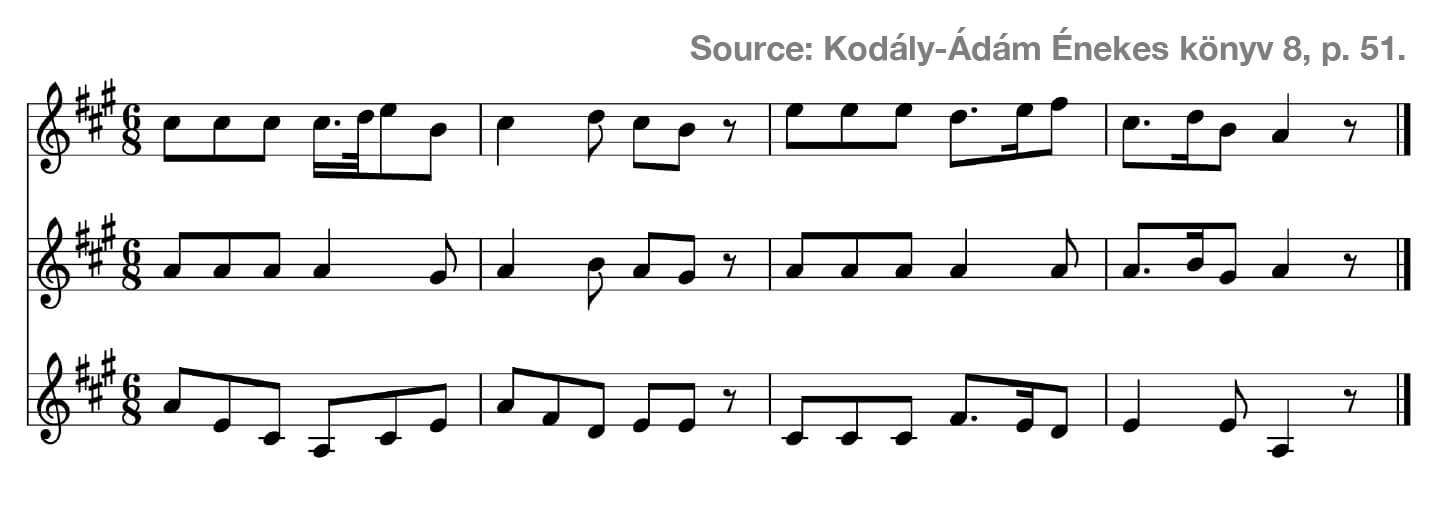
Example 256 (excerpt from Joseph Haydn’s Die Jahreszeiten)

Example 257 (excerpt from Giuseppe Tartini’s Stabat mater)
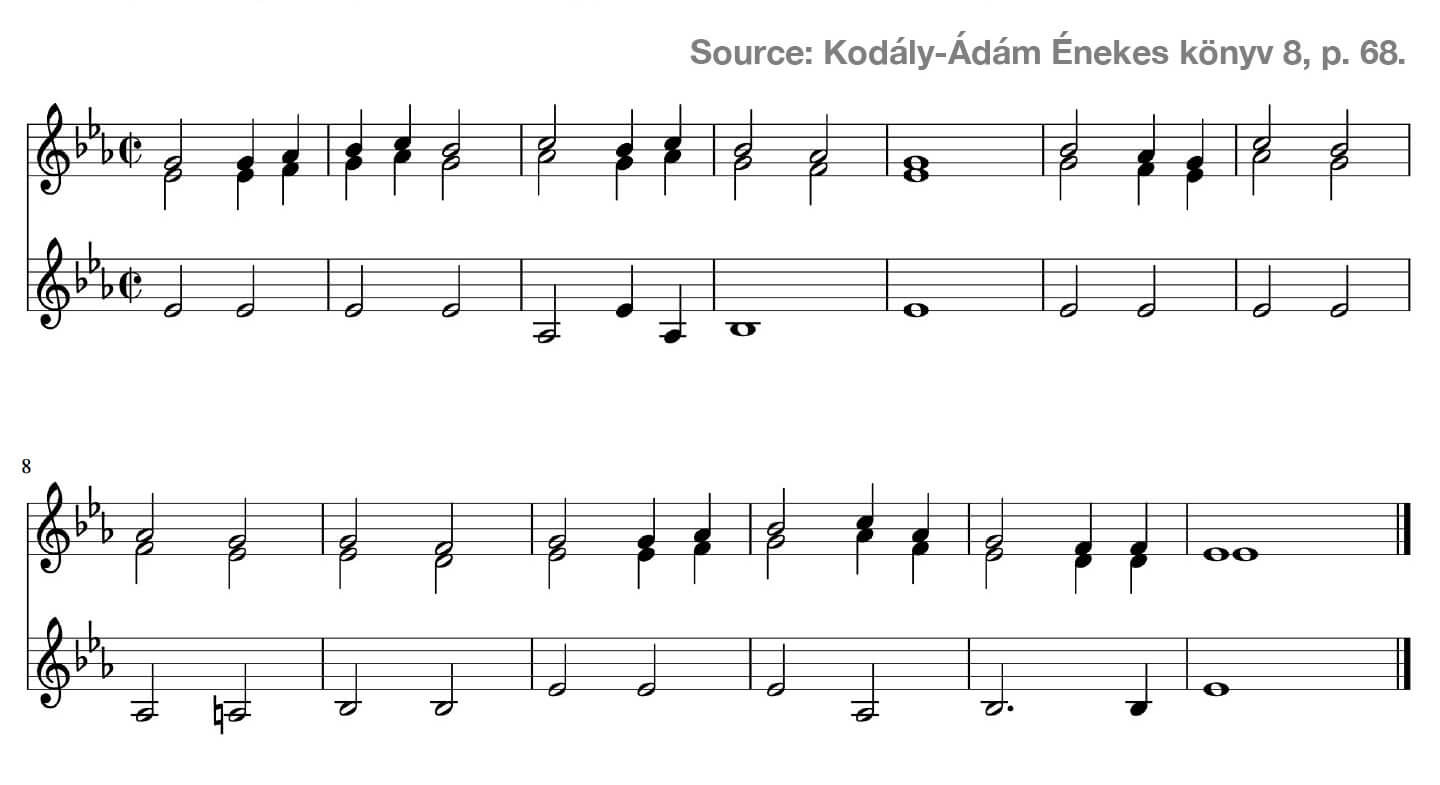
Example 258 (excerpt from Wolfgang Amadeus Mozart’s Die Zauberflöte)
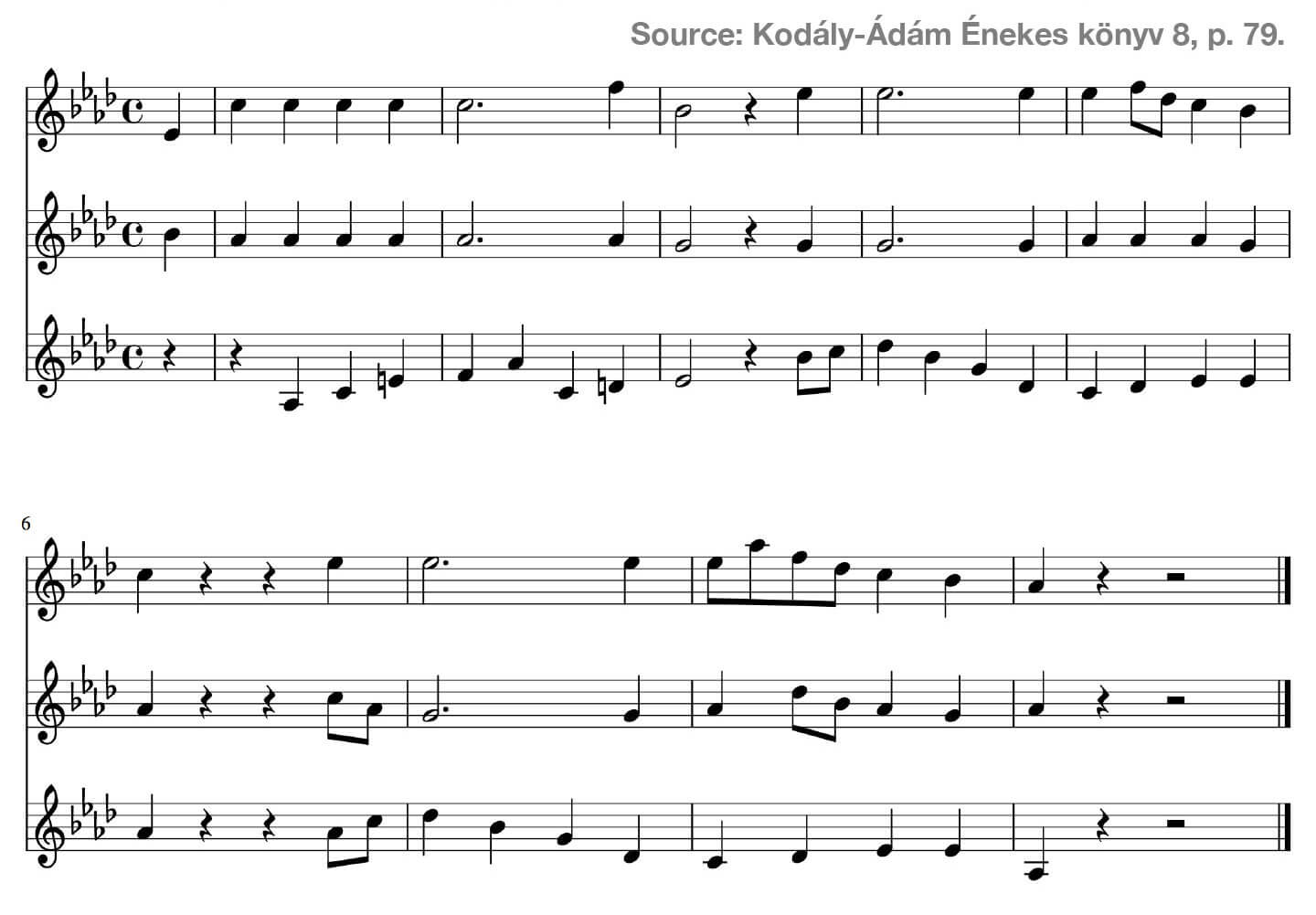
Example 259 (excerpt from a motet by Pierre de la Rue)
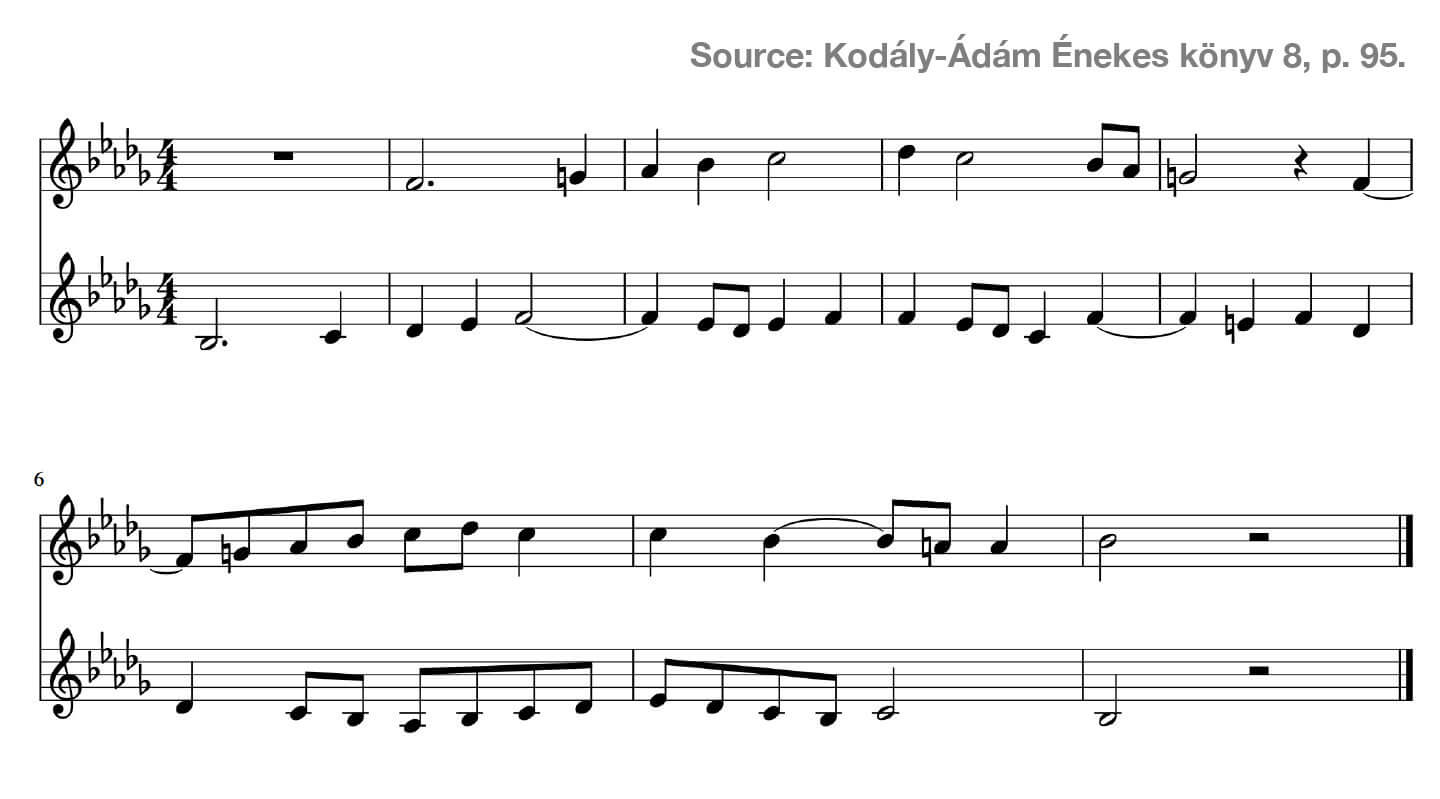
Example 260 (excerpt from Ferenc Liszt’s motet for male choir Istent zengi napkelet)
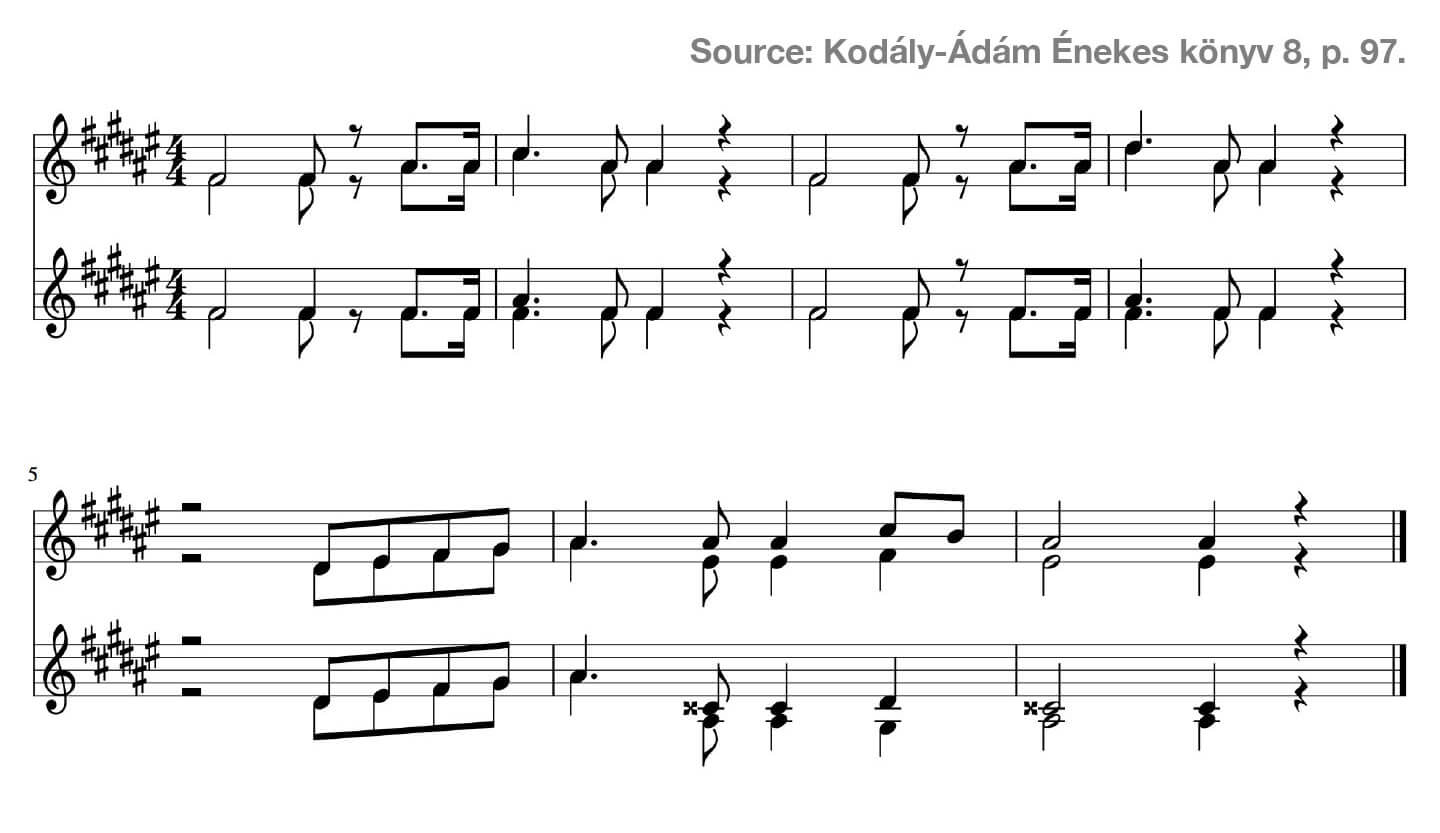
Suggested further material
Ages 13-14
Angelo Bertalotti: Solfeggio No. 2.
Ferenc Liszt: O filii et filiae from the oratorio Christus S. 3.
Béla Bartók: Jószágigéző (first section)
Béla Bartók: Keserves (closing measures)
Béla Bartók: Bolyongás (first section)
Béla Bartók: Bánat (first section)
Béla Bartók: Elment a madárka (first verse)
Zoltán Kodály: Bicinia Hungarica vol. 4. (examples in 5/4 time)
Zoltán Kodály: Vízkereszt (first verse)
Zoltán Kodály: Nagyszalontai köszöntő (simplified version)
Zoltán Kodály: Pünkösdölő (Mi van ma...)
Zoltán Kodály: Túrót eszik a cigány (“B” section)

